Agricultural Regeneration
Through centering Black culture, Kamal Bell is reconceiving food systems, inspiring Black youth to farm, and shepherding the future of food justice.
The many facets of Sankofa Farms, led by founder Kamal Bell, include food production, a mentoring program for minoritized youth, and a thriving apiary.
Robert Farris Thompson, the late scholar of Afro-Atlantic art and culture, once said that in the worldview of the Kongo Kingdom, crossing water was an act of spiritual transformation, a journey across realms. “You become renascent, because the water is the realm of the bakulu, it’s the place where the Ancestors go.” As I crossed Lake Gaston at the border of Virginia and North Carolina, and 85 wound its way into Orange County on my way to Sankofa Farms in Efland, I immediately felt as if I had stumbled on a voicemail from the other realm. The memento was crammed with reminders of parts of my past, Black and white, of people long gone that originated on North Carolina soil. The first of the voices was Rose Merritt of Wilmington, the daughter of a West African woman brought to the United States during the waning years of the slave trade; I also heard my third great-grandfather Harry, sold out of Warren County to Alabama; and my white third great-grandfather and his father—and indeed his grandfather and great-grandfather—a line of planters going back in North Carolina’s Halifax, Nash, and Bertie Counties to the period before the Revolution, with roots in the colony as early as 1674.
First generation farmer Kamal Bell, the founder of Sankofa, immediately felt like a kindred soul. As our Ancestors would say, “spirit fo’ know spirit,” and with the first firm handshake and smile, I knew his investment was cosmic and not merely personal. Like me, his roots go deep into North Carolina history, with his maternal grandfather’s origins in the small town of Oriental in the county of Pamlico along the Atlantic coast. Both of us descend from the over 300,000 enslaved Blacks who made up a third of the North Carolina population on the verge of the Civil War. This is important, because while it often gets lost in the conversation about the legacies of its neighbors—Virginia, South Carolina, or Georgia—North Carolina was both built by and sustained by the legacy created by African Americans enslaved and free. Because of the state’s unique blend of Upper and Deep South ways, these Ancestors left a profound impact on North Carolina’s history and culture; not the least of which was the story of its agriculture.
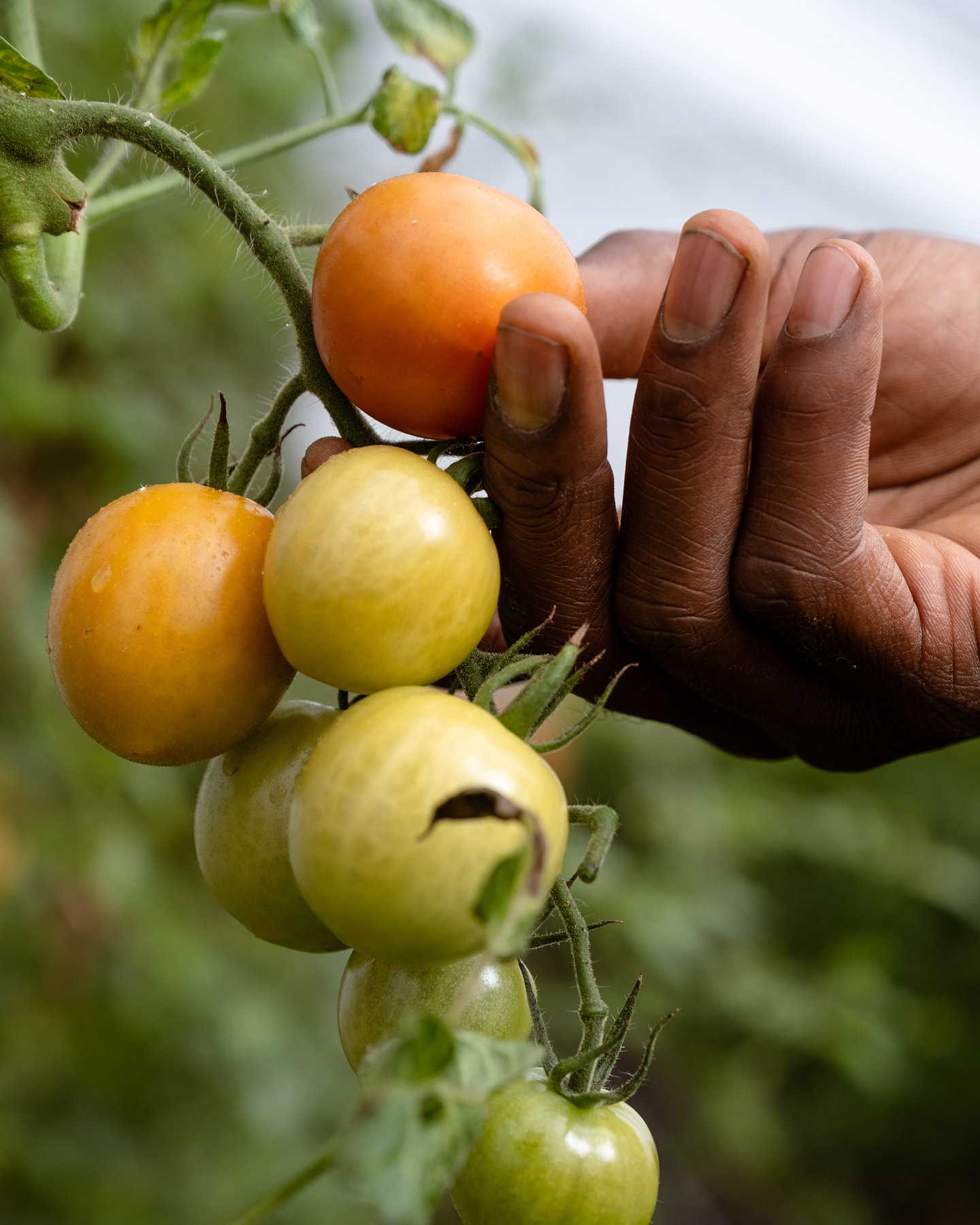
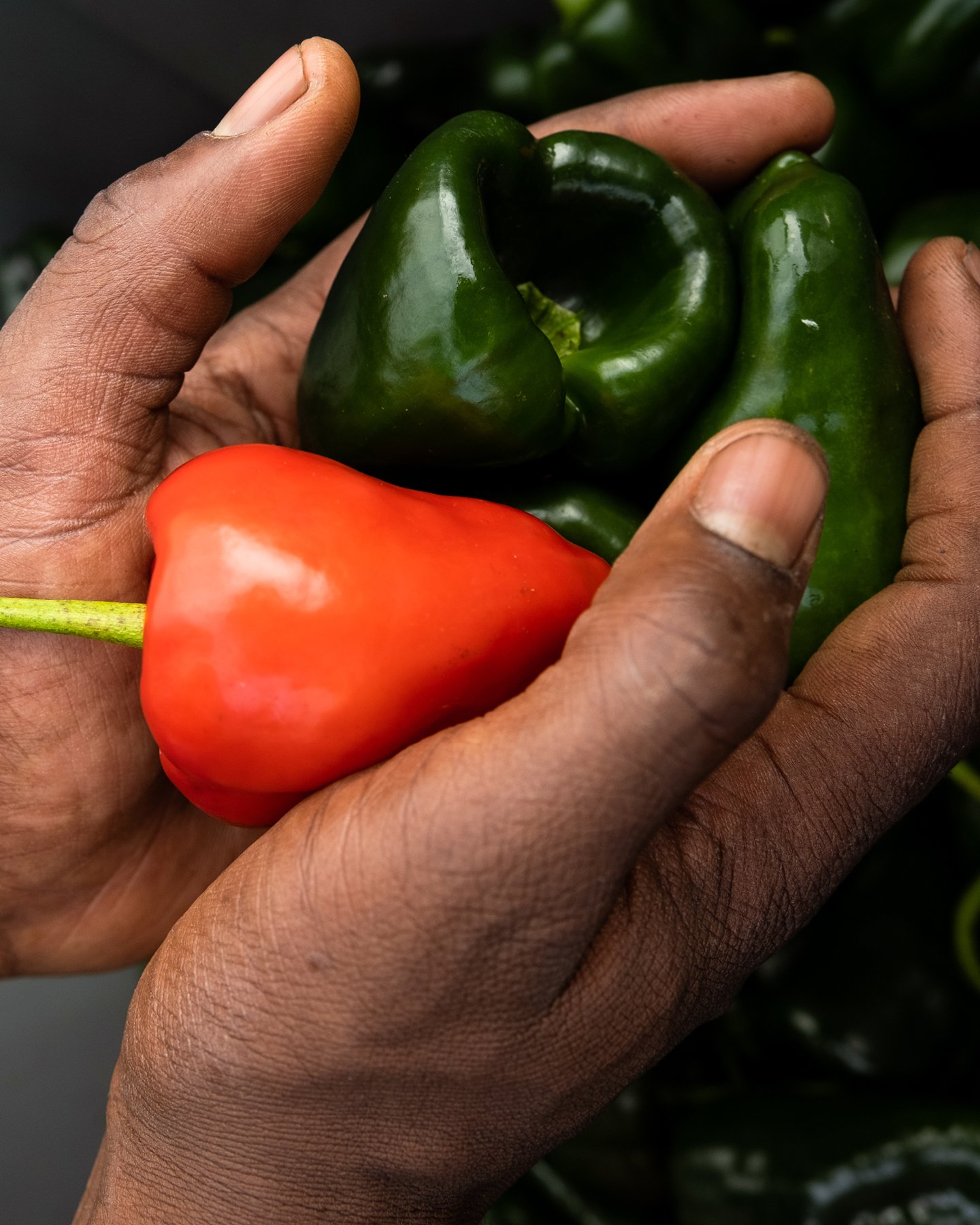
It was our Ancestors who cleared the soil, introduced ancient methods of growing rice brought from coastal West Africa, revolutionized the tobacco industry (still the first ranking producer in the nation), and brought millennia of experience with cotton, sorghum, and crops like watermelon, muskmelon, okra, taro (elephant ear, Colocasia esculenta), and sesame. It was our Ancestors who arrived to their traditional homelands bringing two centuries of experience with gifts from the Americas that became beloved in West and Central Africa, including sweet potatoes (North Carolina ranks as the number one producer), and hot peppers. They were woodspeople and fisherfolk, and created astonishing carpentry and furniture (see, for example, the work of Thomas Day) and dominated the early maritime trades. With all these deep connections, why is our conversation about contemporary African American farming novel? Our Ancestors struggled to pass down land, were constantly dehumanized in their work with the land, and were forced to move to the cities or out of the South completely to find a better life. This is a consistent and devastating Black American narrative: We built something that we could never consistently enjoy the fruits of in freedom; and it turned generations off of farming and a relationship with nature. It denied us opportunities to own land and control our food supply and establish sustainable economic channels for self-reliance and uplift.
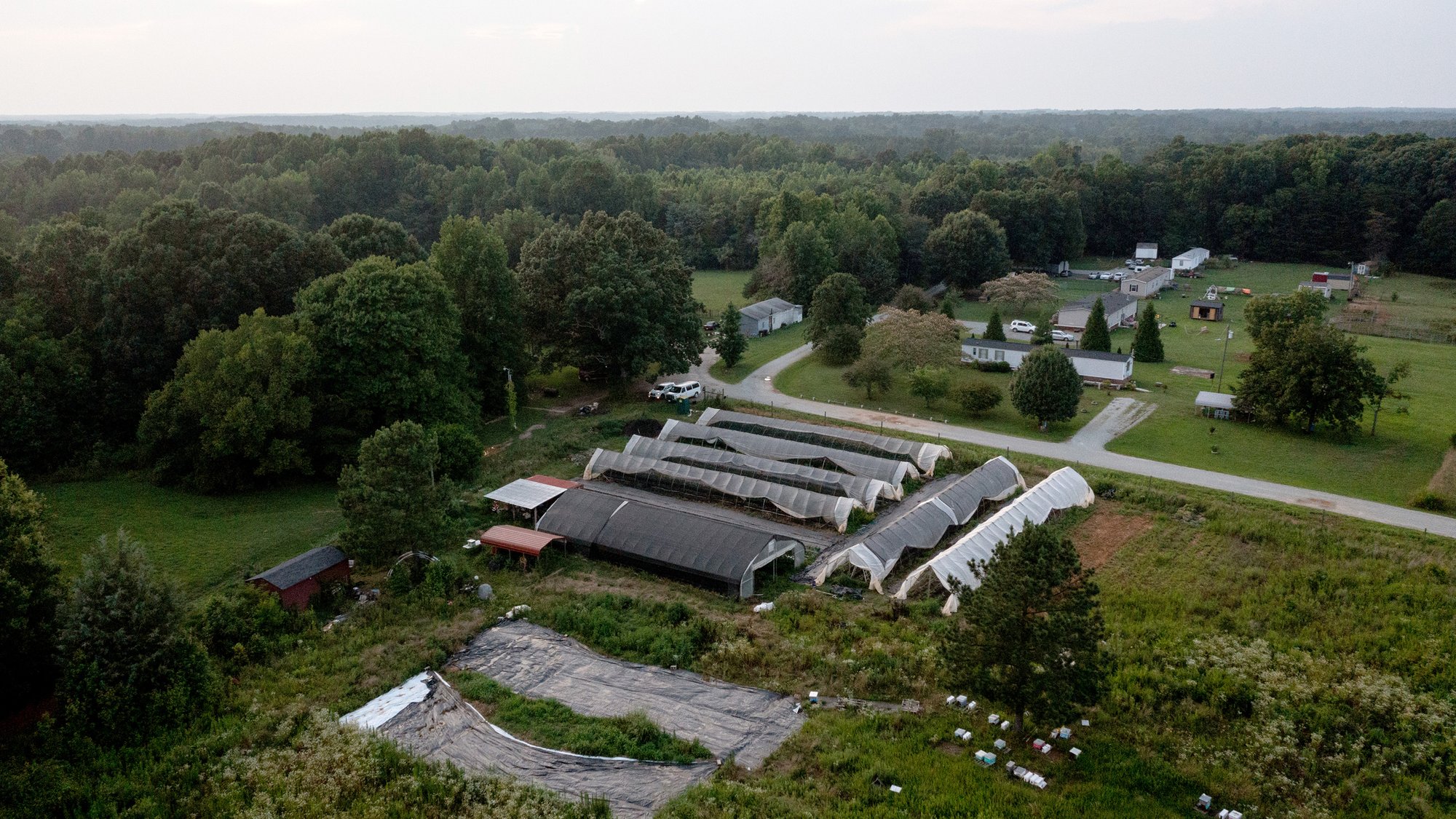
Kamal knows the value of the 12 acres that is Sankofa, not merely a farm but an agricultural academy that belongs to his community, a place he works with his wife, Amber, a birth doula, and where the two educate their three sons about the ways of nature and rhythms of the land—overseeing the process along with farm manager, Devyn Smith. Kamal doesn’t let being a returnee to the land intimidate him—he has a whole network of elders giving him constant advice and answering his questions. He went to North Carolina A&T, one of the foremost land grant colleges in the historically Black college and university family; but his knowledge base is more than technical and pragmatic. I hate to tell and not show—but this needs to be made clear—this isn’t just any young person and his growing family embracing grassroots organic agriculture. This is the descendant of the enslaved and after them sharecroppers, tenant farmers, and Black independent landowners who struggled through Jim Crow to hold onto their land. Kamal is someone who went to a historically Black college and who came to the land with a sense of purpose based on what he saw around him and from what he studied on his way to his destiny. This is a very Black agrarian story, and it’s deeply Kamal’s story.
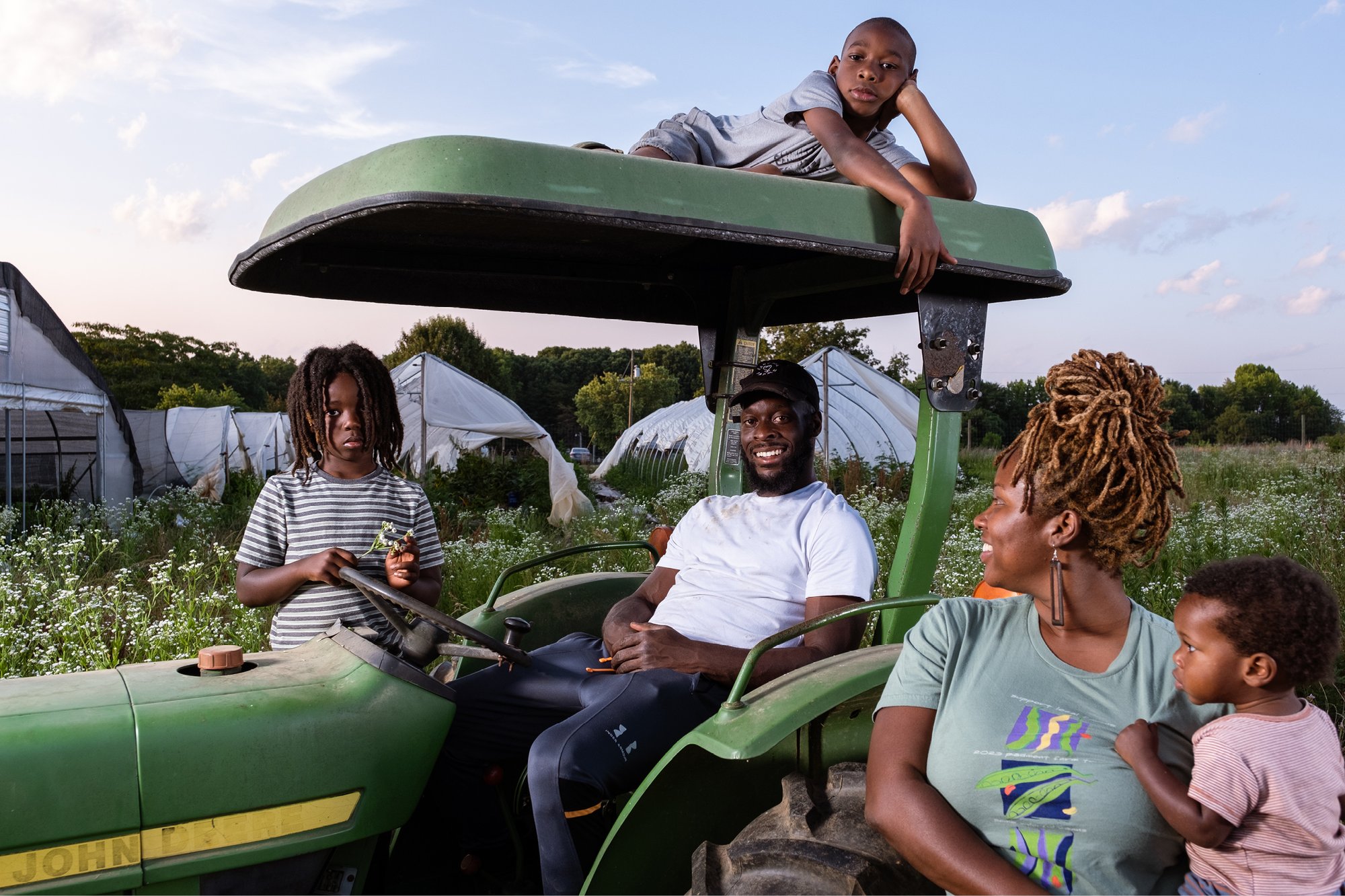
At Sankofa, farming and creating change is a family endeavor led by Kamal and Amber Bell, shown here with their three sons.
When I arrive, the weather is wet and chillier than usual for a central North Carolina spring. Storms and abrupt freezes have brought damage to some of his crops, but Kamal doesn’t seem as disappointed as I would be. His dismay is light. The spring collards, one of the most important crops on the farm, and another signature crop of his state, succumbed to the weather, but there will be opportunities to grow more, he assures me, in the latter part of the season and from the late summer to the fall through early winter. “We grow what there is demand for,” he tells me. “That’s the first thing—you have to grow what the people eat and raise what they will definitely cook.” And yet despite the loss of the collards, there are plenty of leafy greens: rainbow Swiss chard give the hoop house a bejeweled appearance, and they are accompanied by dinosaur kale, parsley, lettuces, cabbages, cauliflower, broccoli, turnips and turnip greens, mustard and beets. Onions are shooting up, thin and bright green, and near them, carrots are peeking out; you can smell the kitchens coming to life as these crops are cut and release their fragrance before being moved to a pot for a mess o’ greens.
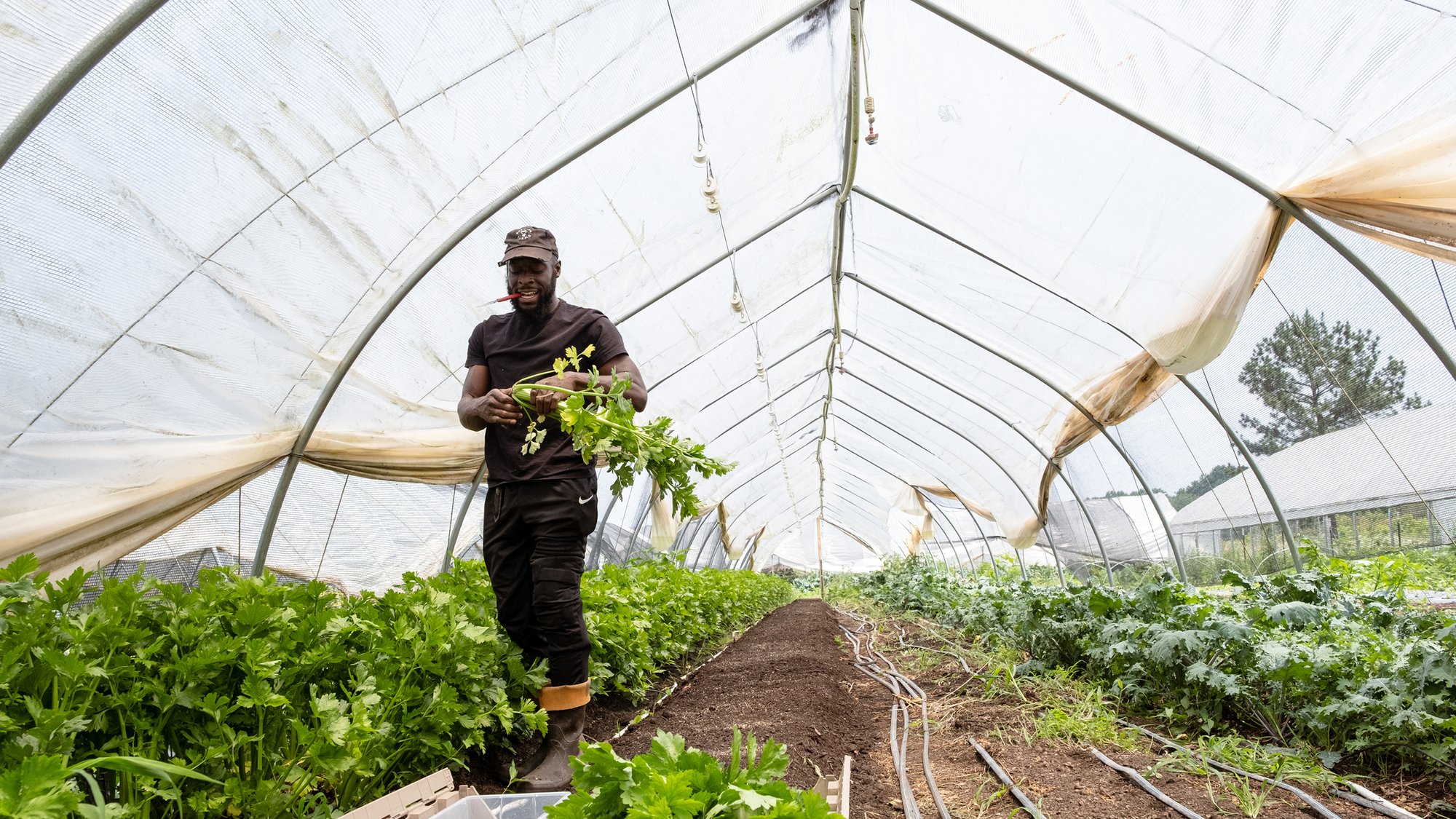
As summer approaches, Kamal has already prepared to transplant zucchini, cowpeas (aka black-eyed peas), yellow squash, okra, melons, sweet potatoes, peppers galore—hot and sweet—and everybody’s favorite, tomatoes. The earth is native red clay mixed with as much local organic compost as possible to achieve a workable loam. “After ‘What do we grow?’ is the next most important question: ‘How do you get the food to the people?’ As a community, we first have to eat,” reflects Kamal. “Then we have to have a more productive conversation about our food systems and what they mean to our communities. Food deserts aren’t just about lack of access to the food, they’re often about lack of access to the access. They are systemically created to keep people in an oppressed and robotic state—a state that allows the system to continue to harm anyone who, unconsciously or otherwise, believes in the system.” Those obstacles are built around long-standing structures, legal and institutional, formal and informal, and in developing Sankofa, Kamal had to craft a strategy for countering them. “I started to think about ingredients and then infrastructure in building a legitimate farming model,” he says. “We had to re-work food distribution.” Not only does Sankofa have a CSA program, but it distributes produce through well-known local churches like St. Mark AME and marketplaces including the Eno River Farmers Market. “Anything to make this [food] the smart choice,” he explains. In the summer, the farm donates some of the harvest to people in need. The many layers of distribution efforts are shaped by Kamal’s broader mission. “I wanted to give something back to our community and build something that centered our culture.”
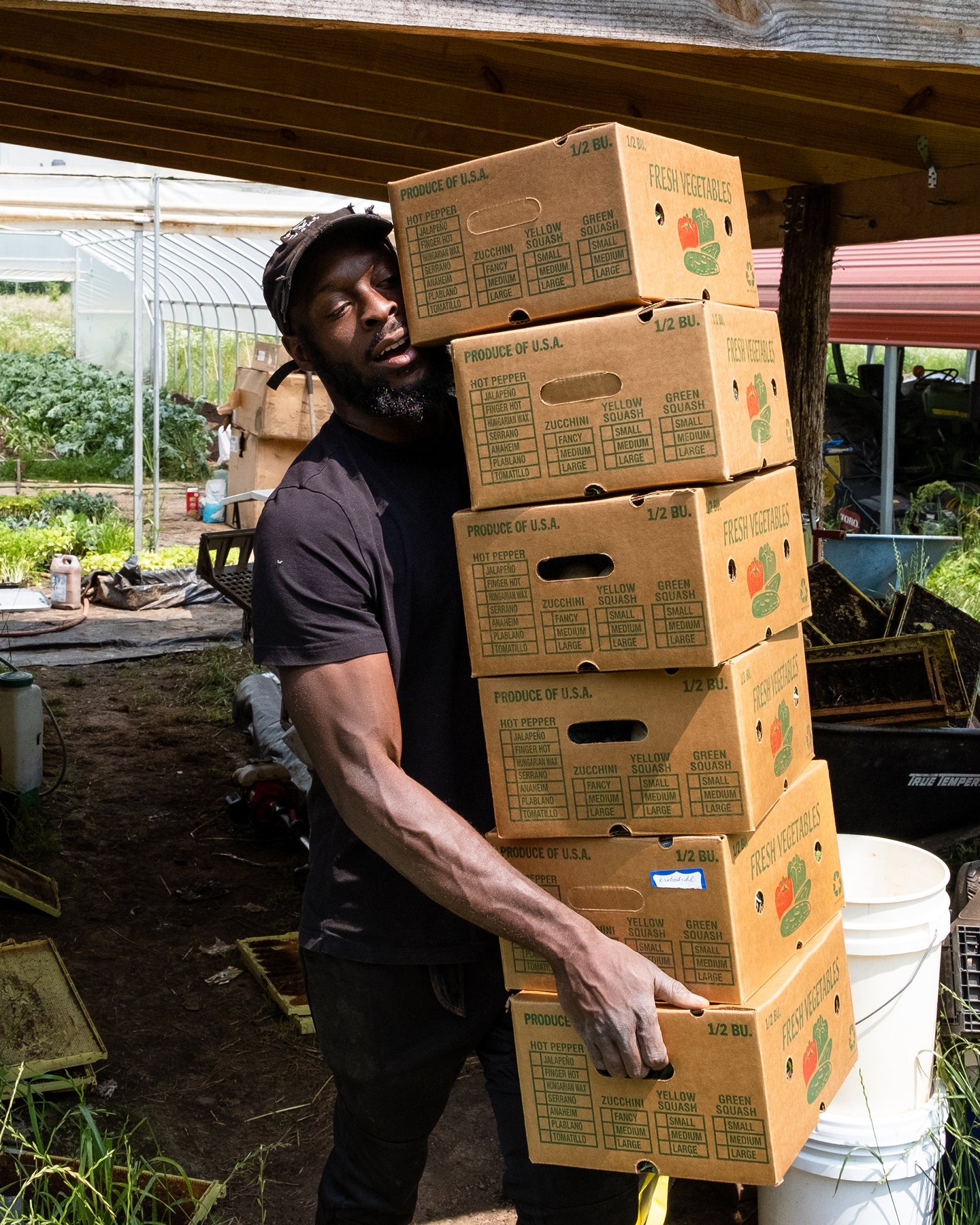
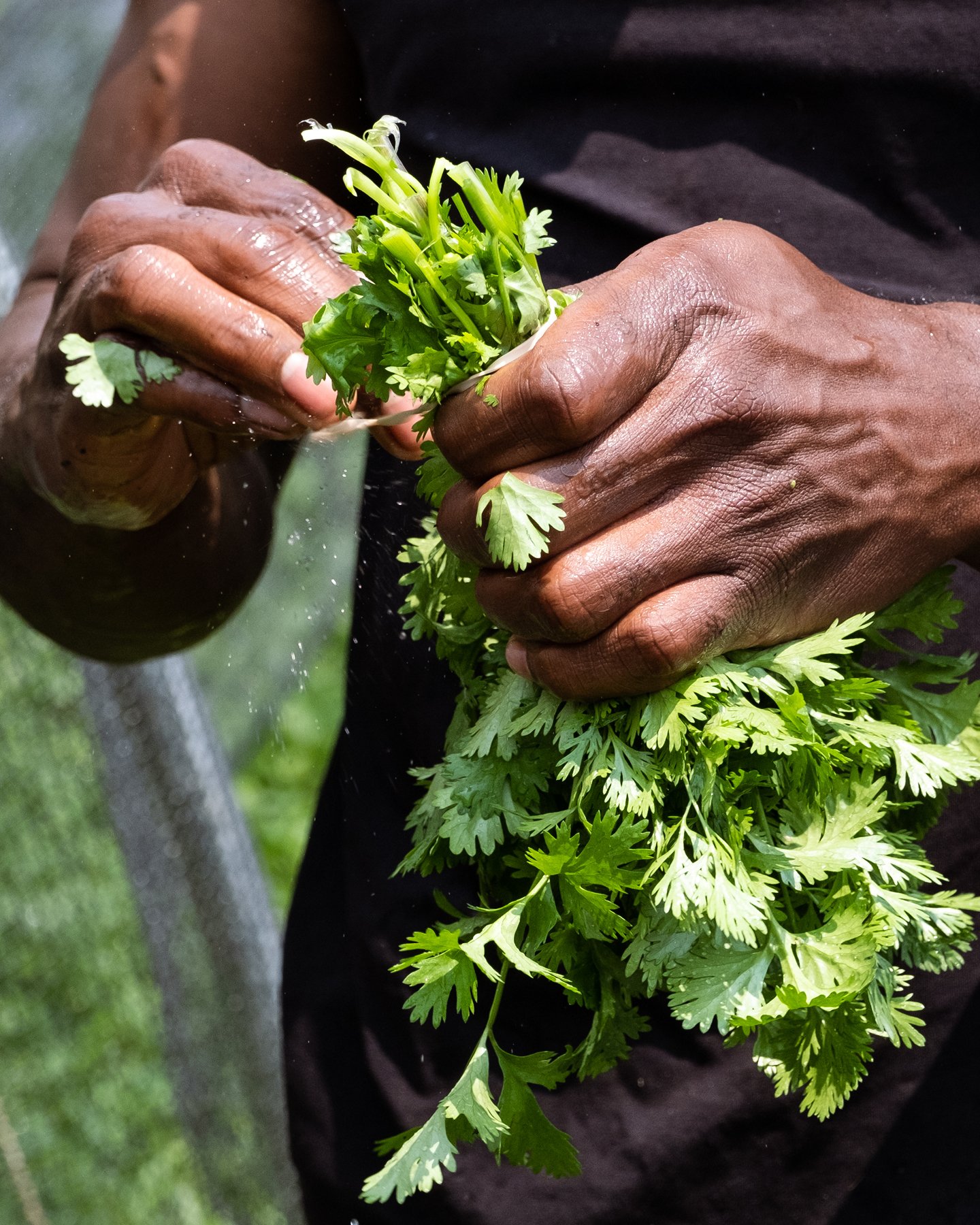
In that regard, Kamal and I compare notes; we both drank from the wellspring from Afrocentricity. Many of his teachers were my teachers. “Those books and my teachers taught me how to center myself and center our history and experience and ask questions based on that and have a solutions-based approach.” His father’s extensive library formed an early fount of Black Nationalist voices—the Honorable Elijah Muhammad, Cheikh Anta Diop, John Henrik Clarke, Marcus Garvey, Chancellor Williams, and beyond. “I came to this with a strong grounding in Black philosophy. The main lessons were build institutions and center your community. Create your own model for engagement and dialogue.”
An essential aspect of Kamal’s efforts to center community is, as he acknowledges, “embedded in our name: Sankofa.” Kamal saw the Haile Gerima movie of the same title—which captures the brutal violence of slavery as well as Black resistance to enslavement and erasure of African history—and was inspired. The principle of “Sankofa” has caught fire in Black culture throughout the Americas as a call to rediscovering and working one’s roots. The concept derives from Akan philosophy, an ideological system that emerged from what is now Ghana. It is represented by a crane-like bird with forward facing feet that reaches its head backward to save the egg on its back—or a stylized heart in the Adinkra iconography. The latter is now the emblem used by Kamal and community. “It is no sin to reach back to recover what you need from the past to move into the future.” We loosely say the words in more or less the same way and laugh. What was once part of a memory lost is now central to understanding ourselves and the legacy we want the future generations to have.
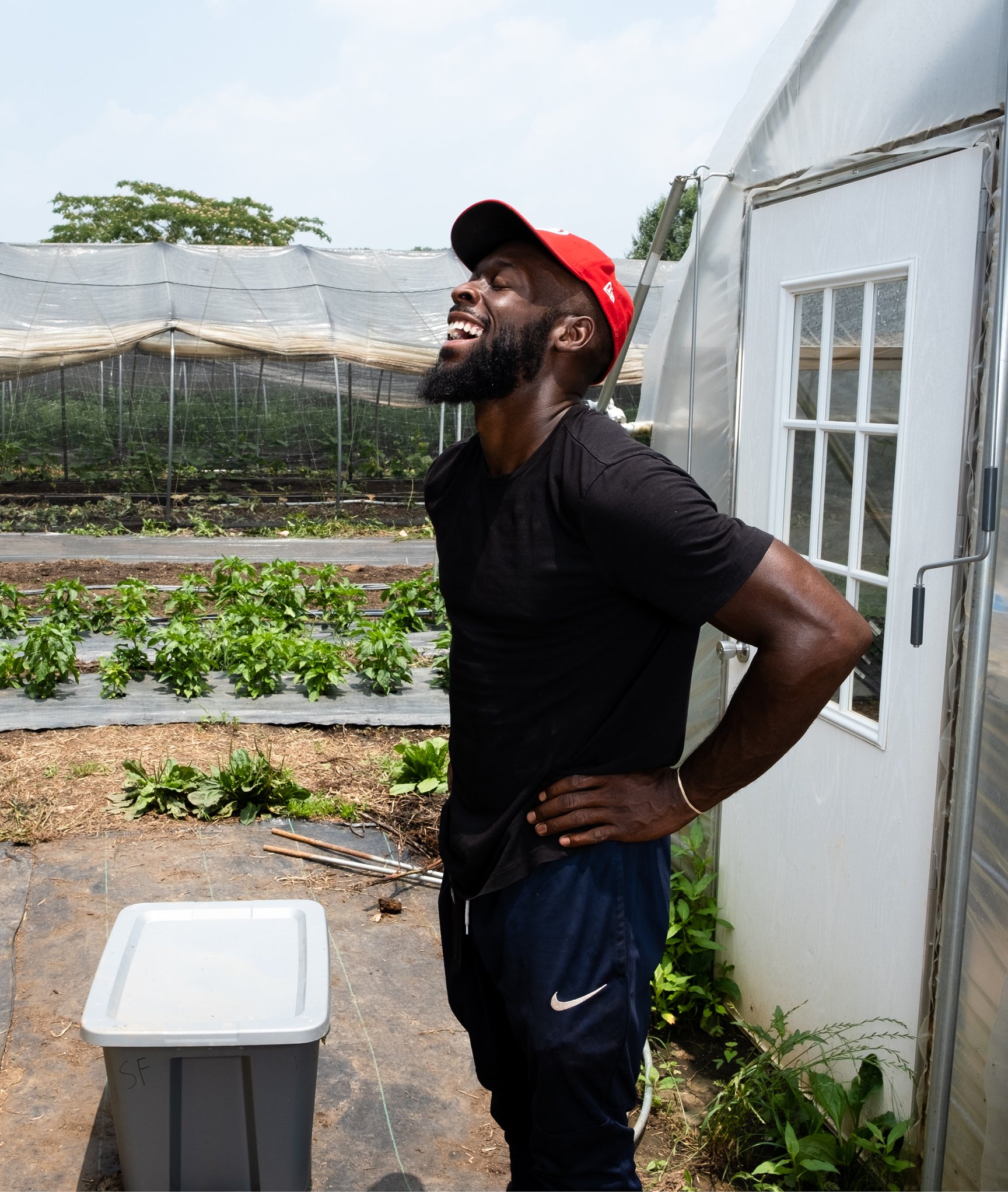
We do this for ourselves because of this bond with the land, which reminds us how to dream and strengthens our connection to something greater than ourselves.
Kamal Bell
Founder
Sankofa Farms
Sankofa is not just a stance, it’s a community approach.
Students of all ages and budding farmers from various areas of Durham come to learn here. Leaders and thinkers like nutritionist Adante Hart and NASA scientist and barbecue master Howard Conyers visit to cook and teach and share. By the time his eldest child graduates high school, Kamal and his wife hope to have an institute established at Sankofa. In the meantime, little ones volunteer and learn as young as seven, and 12 to 18 year olds have their own communal grouping, very similar to the age grades I’ve seen in West Africa working cooperatively building up life skills and forming bonds. Kamal is planning for a future when college students will intern here, learning with Kamal for a three-year commitment.
The Academy’s first cohort involved a seven-year process of mentoring and building relationships, as the students shifted to take greater responsibilities—learning and then harvesting, laying irrigation, working at the farmers’ market, and driving a tractor. The Sankofa curriculum encompasses more than the rituals and processes of cultivation—it also requires participants to engage in public speaking. “I do not know if they get that they ushered in an era of change in the story of Black people and agriculture,” says Kamal, reflecting on the first cohort. “When Black youth see Black youth farming, the work is attractive to other Black youth. It helps rejuvenate the interest and the community.” Kamal seeks to bring in students who he asks “to be open and want something different for their community,” and for him, the best results are those where “the students grow and use their experience to have bigger, brighter outcomes for themselves and their larger community.”
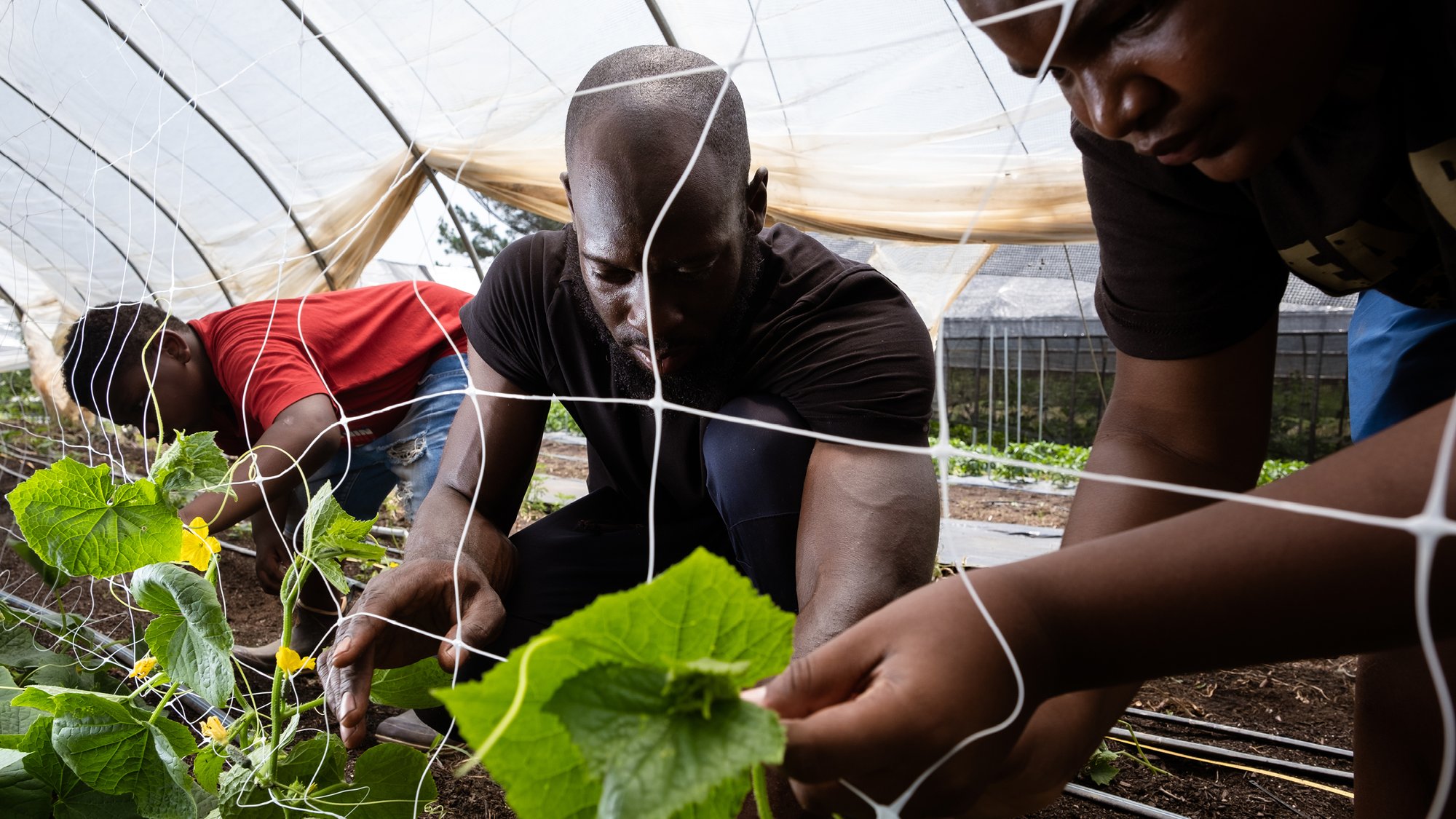
Mentorship is key as the interns’ skill set increases; as they learn, watering for kale and celery and other crops are different. Ducks, guineas, chickens, and turkeys in the biota of the farm have their own procedures to master—and the blackberries, peaches, and blueberries in the burgeoning orchard have other lessons to teach about pollination, pest control, and staying aware of the seasons, the weather, and shifting climate patterns. “You have to keep all of that in mind and at the same time remember this is bigger than you, the grand scheme of it,” says Kamal. Later, he adds, “It is important to have [the students] interact with the world in a positive way. Not as discipline or talking down or discouraging, but uplifting, and affirming, giving them the keys to ownership of their own lives and problem-solving tactics of which the farm is just a part.”
Kamal conveys these messages through social media, which also expresses his commitment to creating models of engagement that are authentically his, and his community’s. On Instagram and more recently on TikTok, he’s continually posting growing tips, farm scenes, and other highlights. “I recognize if we wanted to get more kids in [to farming], the media is ultimately responsible for some of the stereotypes,” he tells me. “Anytime you see Black farmers, it’s a sad story—you can see the trauma and the history. We’re never smiling, there’s never any joy. Anytime you see the opposite, where Black farmers have joy, or are affirmed, it usually gets brushed by. We had to change that perspective. We want the kids to feel positively about farming. They are beginning to see the world; we want to expose them to a different point of view.”
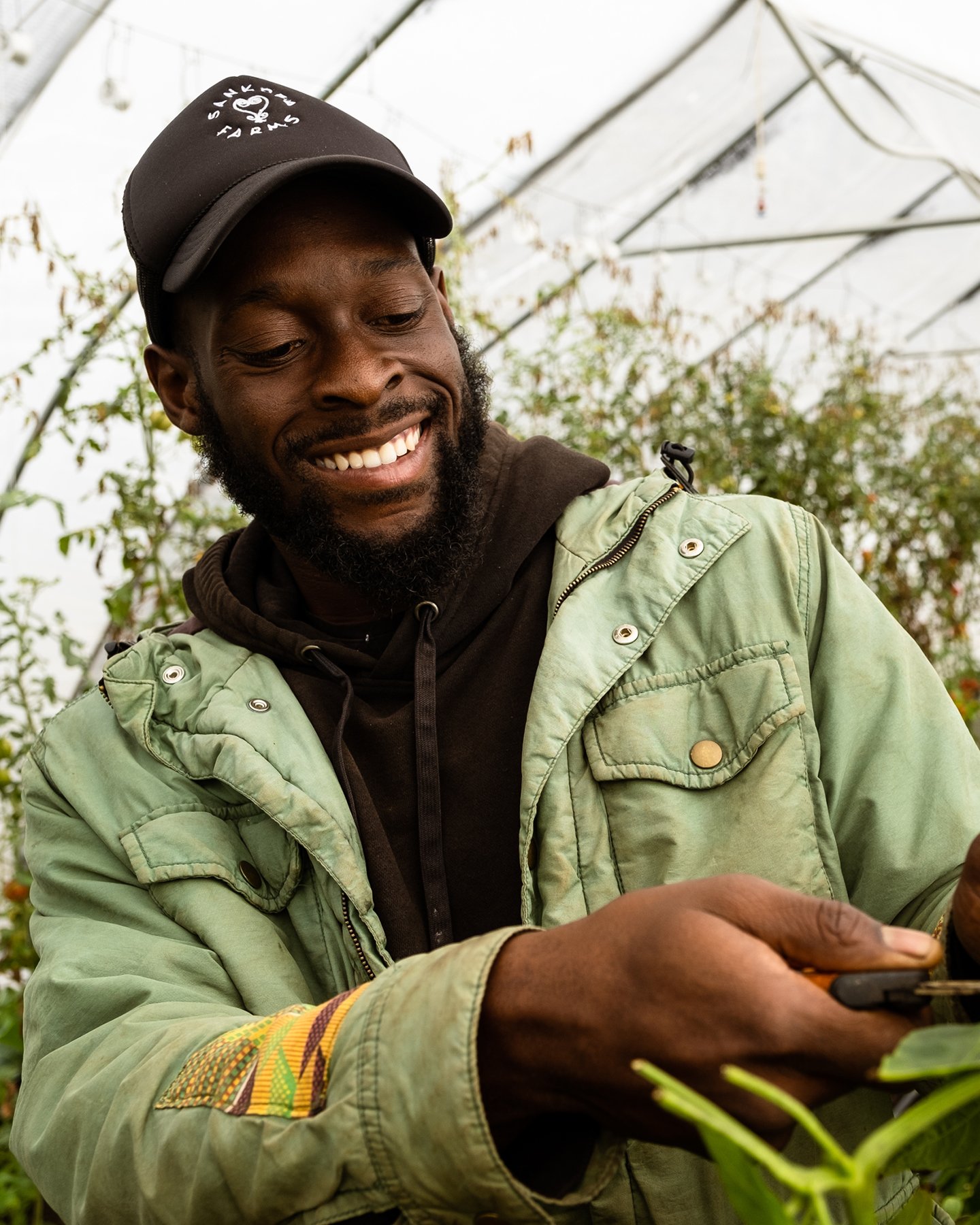
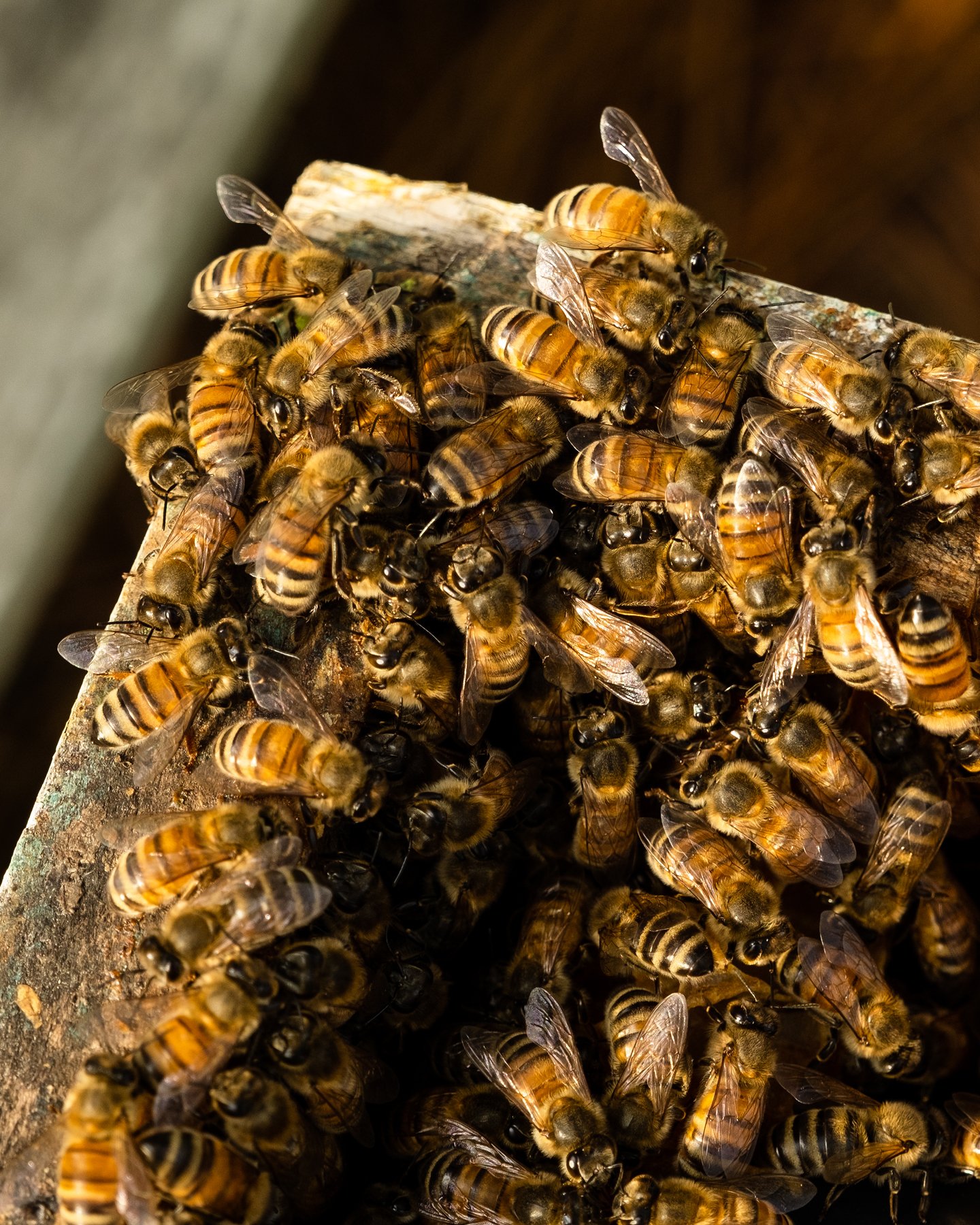
The day of my visit was not the day for the full Sankofa experience. Luckily the pear and apple and cherry trees were in bloom, and the wind went through the new oak leaves and the broom sedge like a breath, but the bees who sing another story and make the apiary on site, and the honey they are celebrated for, were not in flight. “When you’re divorced from nature, the first thing is to be scared of or hate the bugs. When you’re in touch with nature, those are the first animals you pay attention to,” says Kamal. “The earth changes, the climate changes, and you know the bees, the roaches, the ants, the spiders, all of them will adapt. But will we? Bees, they talk to you. They speak to me in different ways.” His poetic observation reminds me of another West African tradition: Yoruba spirituality from what is now Nigeria and Benin and all over the world where the Yoruba were exiled during the Transatlantic Slave Trade—like Trinidad and Tobago, Brazil, Haiti, Cuba, Puerto Rico, and beyond. The orisha—or divine force or representation of farming, named Orisha Oko, is represented by the bee. Kamal is in direct communication with their familiar. “Bees don’t belong to me, they swarm where they want to swarm.”
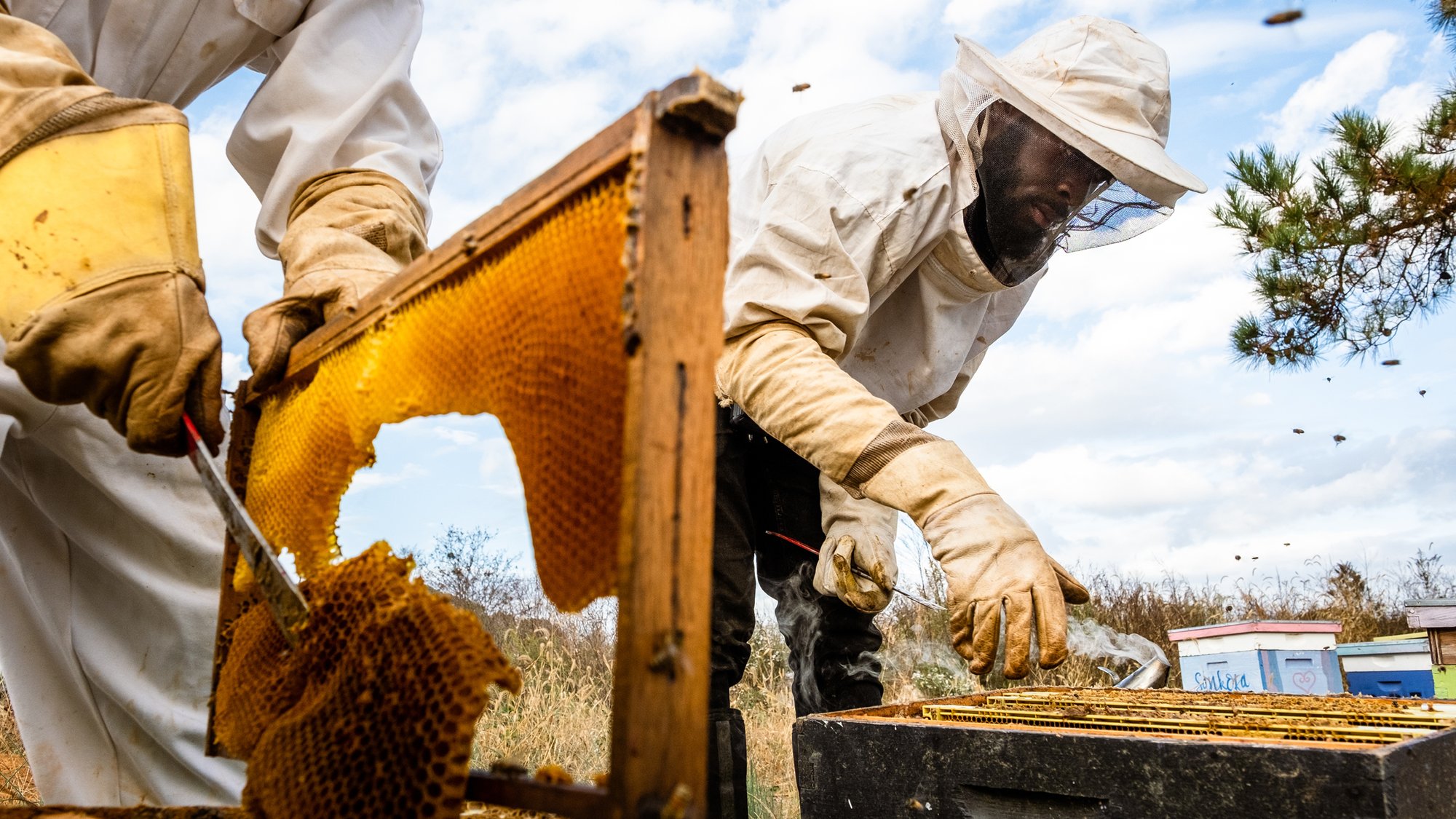
His daily work begins with sacred acts that ground him. “Sometimes I just start my days out here by taking off my shoes and pouring libation. Every day I feel the Ancestors’ presence, we’re just stewarding here. The challenge of farming while it’s hot—is real! Any hard work out here is a rite of passage.” I think about the times I’ve worked tobacco or cotton to get a feeling for the past and how it felt to “hear” the dead. It was an inner knowing, and it was scary yet fulfilling. I can’t imagine being outside of the space where you can’t avoid eternity—past, present, and the future along with its unknowns. That more than anything gives me great respect for brother Kamal and his wife and family—they embrace what many run away from—the vulnerability that comes with this sacred work. Once you work the land, talk with the Ancestors, and begin to forge that together into a legacy, you can’t run away from it, and in many ways, it runs to you. It cleaves to you. “We do this for ourselves because of this bond with the land, which reminds us how to dream and strengthens our connection to something greater than ourselves,” he says. “That is what agriculture gives you.”
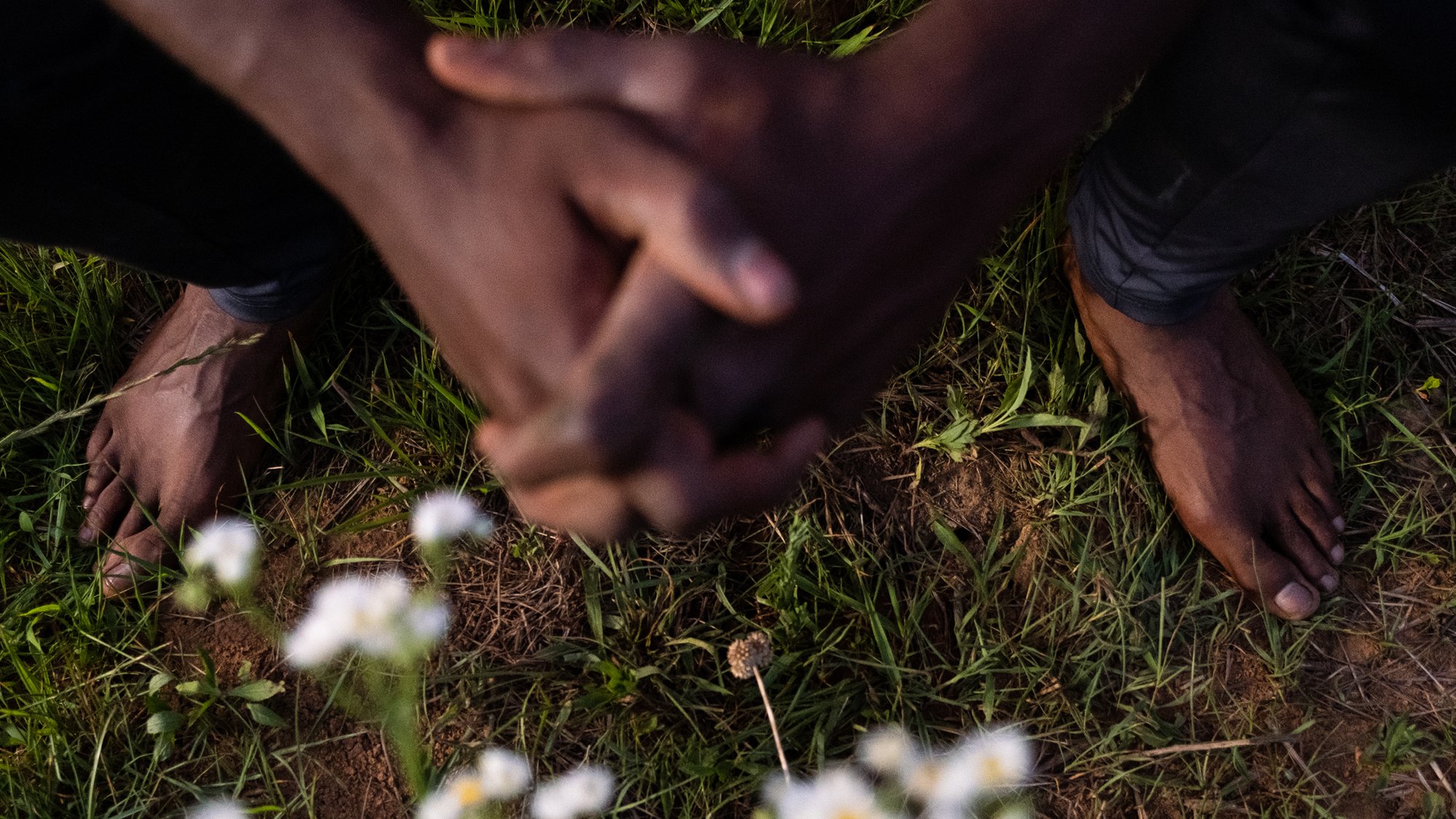
Kamal is cultivating his agricultural endeavors at a time of 21st-century economic pressures, the increasing derangement of our climate, and our collective alienation from nature; those forces shape his work. “I have to think about all the different pieces and communicate them to students, to elders; lessons about how food is your medicine and the ways that the food system and its infrastructure is changing, and yet prices are rising and the climate is changing. We need to talk about these things and come up with solutions, which is why I do this. Nothing will change on a legislative level fast enough, so we have to be prepared.”
Deep hugs ensue. Brother Kamal gives me veggies in the old school Southern way—sending me back with some produce, something to eat. We start down the road and I realize that his credo is mine. Kamal leaves me with this: “I hope to bring healing and honor to our Ancestors. I hope this work is part of my maturity. I believe the farm can bring us back together and be a place of healing. This is my holy place.” ❤
Michael Twitty is a Judaics teacher and culinary historian focusing on the foodways of Africa, enslaved African Americans, African America, and the African and Jewish diasporas.
Cornell Watson is a photojournalist based in Durham, North Carolina. His photography centers Black stories, and he frequently contributes to national publications such as the New York Times and the Washington Post.
At Kazam! Magazine we believe design has the power to change the world. Our stories feature people, projects, and ideas that are shaping a better tomorrow.